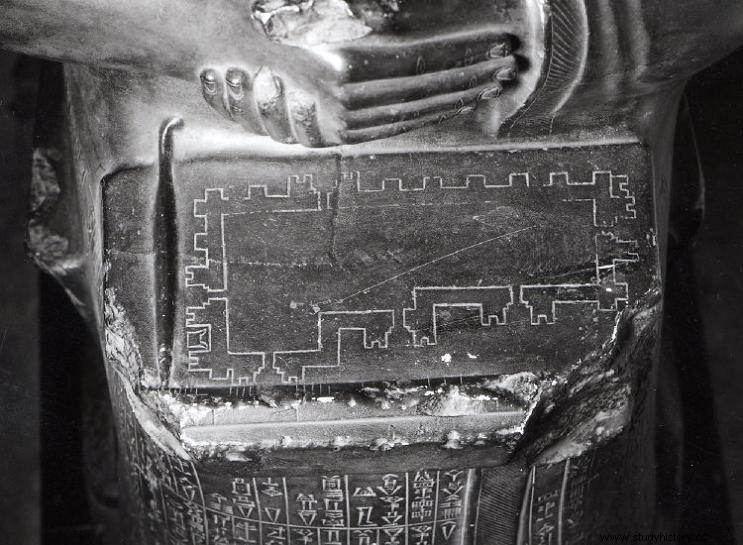In the past, grandmothers used to say that, to succeed in life, you had to study to become a notary, an agricultural expert, a doctor or an architect. In ancient times, it was not usual for a monarch or a ruler to be interested in certain trades, even if they were prestigious. It was much more fun to hang out studying anatomy with the concubine or economics with the tax collector. In the Sumerian city of Lagash 4,100 years ago, we find Gudea , an anomalous president who liked to practice an activity other than reigning.

Gudea
We have found no texts of him boasting of campaigns or military victories. He did not use the title of king either, but that of governor ( Ensi ). Several statues of him have been preserved in which he is not dressed as a warrior, but as a pious official or as a kind father of a wealthy family. In his time, in full Sumerian rebirth, it seems that Lagash it became the dominant city, or at least a very influential city. It is not known if he was independent of the thriving Ur , but in any case he must have weighed quite a lot between the two rivers. Perhaps its wealth was due to being located on the caravan route. Gudea he used that wealth to fill the city of Lagash with buildings, and even made donations to temples in other cities.

In one of his statues, the one known as Statue B, he appears seated and with a text written in the kaunake . If we looked more closely at the lap of the statue, we would see something unique:a tablet, a style and a ruler. And on the tablet you can see the plans in the form of an elevation of a building. It is about those of his own palace. Was he the one who designed it? Well, it seems that yes. A Mesopotamian ruler would not be in the habit of representing himself in this way if there were not an important reason involved. And we find that reason in two stone cylinders where his autobiography is collected. In them Gudea tells that he had a dream in which the gods taught him the plan of a temple, as well as the position of the stars that indicated the day on which the works should begin. He built that temple on the advice of his mother, a priestess. It is the Ningirsu Temple of Lagash , the Eninnu , whose founding nail contains the phrase “…he (Gudea) did what had to be done… ”. Very significant phrase if we relate it to the dream of her autobiography.

After that, he built numerous buildings and public works. And among them is his own palace, whose remains coincide with the plan that we observe in the lap of his statue. We do not know if that dream was the one that made him discover a taste for designing buildings, but in any case, his contemporaries enjoyed an explosion of construction activity, beautifying cities as it had not happened for 200 years. His love for architecture reached such a point that he adopted the custom of naming the different years of his mandate using the start of a construction as an event, instead of a war or a natural disaster, as other rulers did.
We could say, therefore, that his success as an architect and ruler shows that grandmothers (*), and mothers, and even more so if they are priestesses, almost always have to be listened to.
(*) Linguistic curiosity:In Sumerian “grandmother” is said “ummi-ummi ” (mother of my mother).
Contributed by Joshua BedwyR author of In a Dark Blue World
